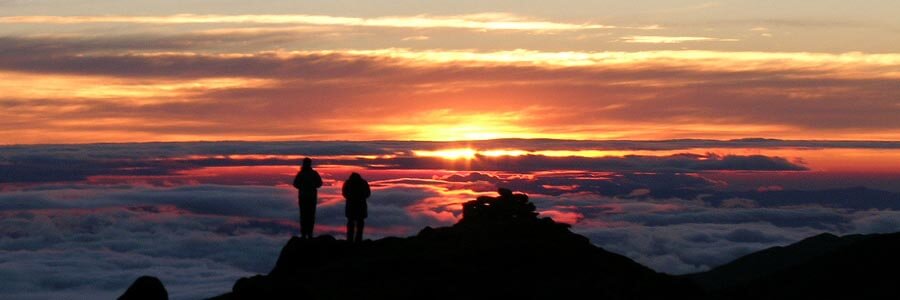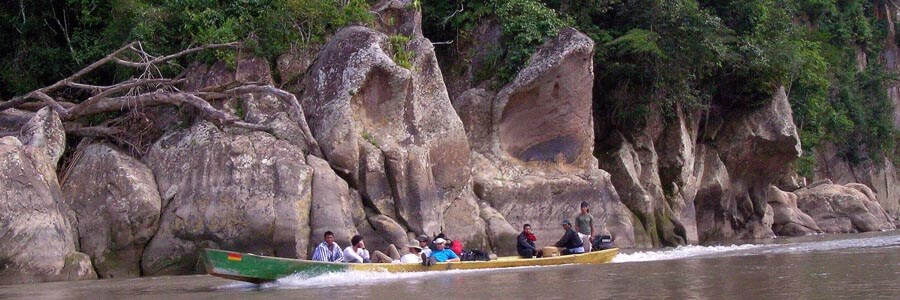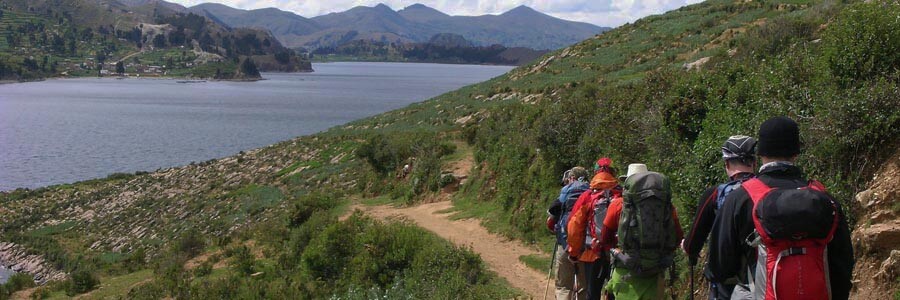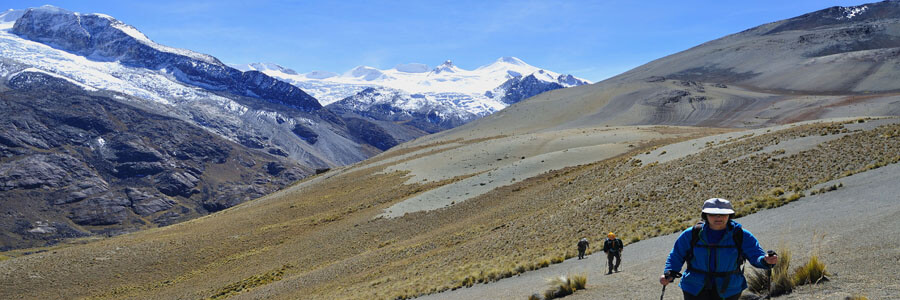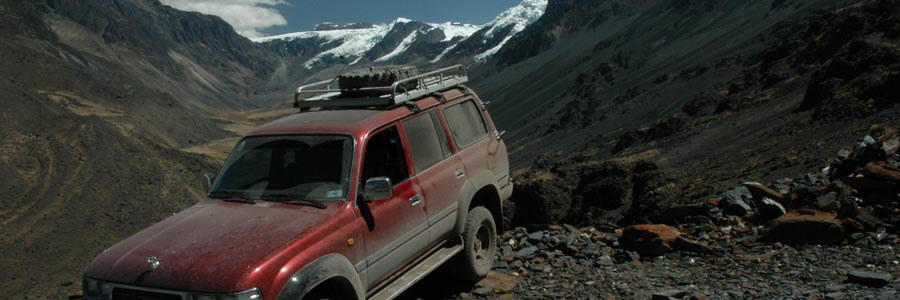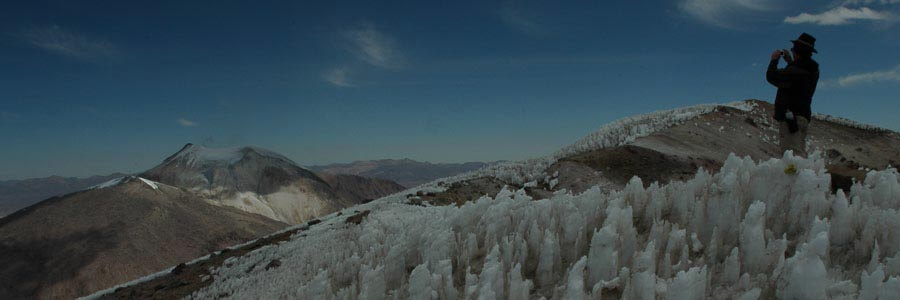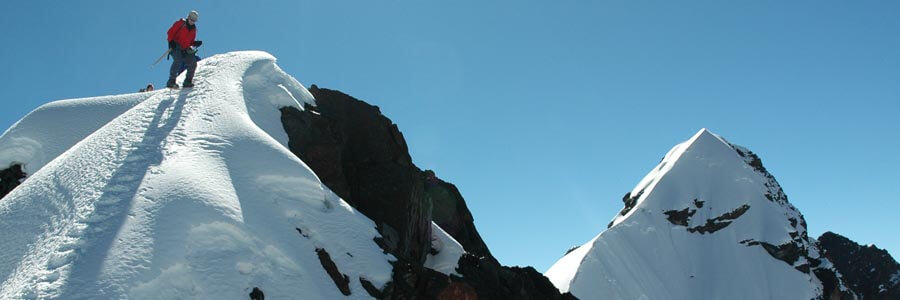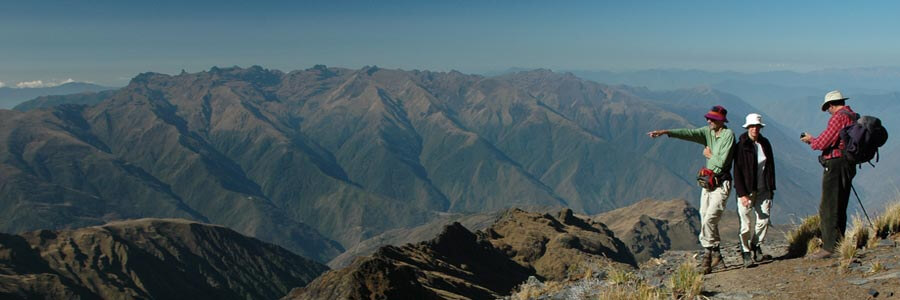Code: MESAJAMA Duration: 4 days days
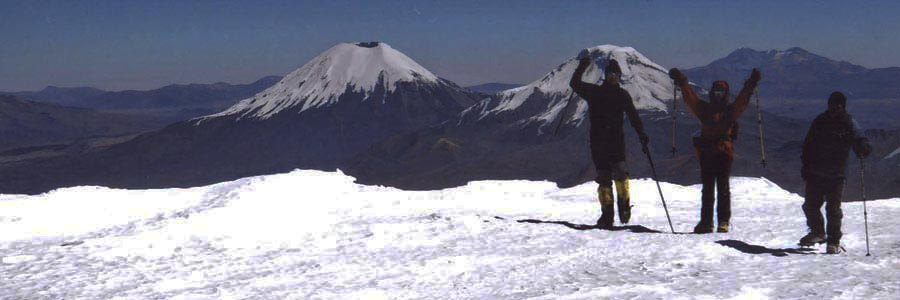
A very old legend recounts that in times when there were no humans on the earth and only the mountains wandered over the highlands Mururata was the highest and most beautiful of the Andes. One day he contemplated his reflection in Lake Titicaca and his ego expanded to the extent that he wanted to be emperor of the earth. Wiracocha, the supreme god of the universe, did not take a liking to this rebellion so sent a warrior to behead Mururata (that literally means without head). It is said that - when cutting the mountain’s head -, the warrior said the Aymara word “Sarjam” (that means get away), so the head that landed hundreds of kilometers to the south was named as Sajama.
Today we can see Mururata to the northwest of Illimani with its flattened top, and his head; Sajama As an isolated cone nears the border with Chile. Nevertheless Sajama is still the highest mountain of Bolivia, actually an old volcano covered with glaciers.
Please note that to take this trip alone, you must already be acclimatized to the highlands. This means that you must have spent at least 3-5 days at the highlands doing light physical activity. For more information about this subject, please refer to the page acclimatization at our website.
Short Itinerary
Day 1. Transport to Sajama. Trek to base camp. Camp
Day 2. Trek to high camp. Camp
Day 3. Climb of Sajama. Trek to base camp. Camp
Day 4. Trek to Sajama National Park. Transport to La Paz.
Highlights
- Sightseeing of the highlands and Sajama National Park on the way in and out.
- Climb the northwest ridge to Sajama 6,549m.
Services Included
- Meals mentioned in the itinerary.
- Full land transportation during the trip.
- Common camping equipment: 3 season tents (one per each two people), dinning tent, kitchen stuff, and tableware.
- Common climbing equipment: ropes, carabiners, slings, snow stakes, ice screws.
- Professional bilingual UIAGM / IFMGA / IVBV certified mountain guide.
- Luggage transportation with porters and/or animals (15 kg/33 lb per person max weight).
- Cook when camping.
- National Park entrance fees.
Services Not Included
- Transfers IN/OUT to airports.
- International & local flight tickets & fees.
- Meals & hotels while in La Paz.
- Personal camping equipment: sleeping bag, mattress, headlamps, and clothing.
- Personal climbing equipment: plastic boots, crampons, harnesses, ice axe.
- Insurance of any kind.
- Any expense due to a rescue operation (rescuers fee, transportation, or medical cost).
Day to day details
A pleasant drive traversing the flat lands will take us to Sajama National Park. After lunch, the muleteers will be ready to head off towards the base camp located at the foot of the impressive west face. The trail takes the basin of a narrow valley surrounded by the highest ‘forest’ of the planet. The local species of trees are called keñuas (Polilepsis Tarapacana). The camp is close to the only fresh water spring in the area.
Overnight: Camping
La Paz: 3,650m (11,972ft)
Trailhead: 4,466m (14,648ft)
Sajama base camp: 4,800m (15,744 ft)
Driving: 4-5Hrs (325km)
Walking: 2-3Hrs (4.5km)
L,D
With the help of the high-altitude porters we will negotiate our way through moraines, loose rocks, ashes and sand towards the high camp. The campsite is composed by few small platforms build over the steep slopes of the north ridge. Although somehow protect from the winds by a rock pillar, the camp can get very windy sometimes. We will probably have to work on the sandy slopes to build platforms for the tents.
Overnight: Camping
High camp: 5,665m (18,581ft)
Walking: 5-6Hrs (3.5km)
B,L,D
An early alpine start will take us through the last sand and rock slopes. At dawn and after having climbed the only steep section of the route (up to 40?), we will reach the top of a rocky ridge that we will scramble towards the glacier. The ensuing walk over the snowfields and small crevasses will steadily take us to the summit. Depending of the season the route may be filled with “penintentes” (icy formations like standing feathers) that can make the climb a nightmare. The summit is flat and big as a football pitch and one does not realize where is the highest point until you see the south face sweeping down to the lower flat lands on the other side. High up there it is usually so cold that just a few minutes are spent to take photos and the descent starts right away. Certainly you will be very tired back at high camp but better keep going down rather than spend another night at this altitude, after a very welcomed hot soup and a short rest we will get down to base camp.
Overnight: Camping
Sajama: 6,549m (21,480ft)
Sajama base camp: 4,800m (15,744ft)
Walking: 13-15Hrs (7km)
B,L,D
The hike down to the head trail where our vehicle will be waiting will fell really short after yesterday’s long journey. Since, the mules usually take much longer (at least one hour) than the rest of the group, our suggestion would be to keep walking towards the hot springs where besides having a well-deserved relaxing hot bath, we can have lunch and wait for the car to take us back to La Paz.
Overnight: None
Trailhead: 4,466m (14,648ft)
Sajama: 4,200m (13,776ft)
La Paz: 3,650m (11,972ft)
Walking: 1-2Hrs (4.5km)
Driving: 4-5Hrs (325km)
B,L

